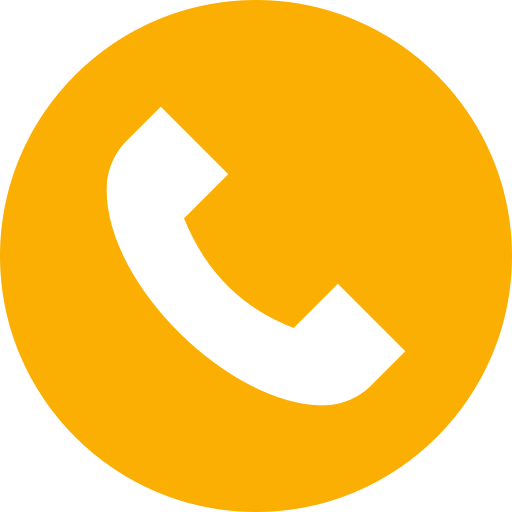Salesautomators Blog
How to increase the number of incoming calls with call analytics
Marketers have set up and run an ad, it has a high reach, there are clicks, conversions. But managers say there are few or no calls. The experts of Salesautomators offer a breakdown of common reasons why phone calls are infrequent or non-existent.
The calls are there. No managers, irrelevant working hours
It is difficult for businesses to admit that missed calls are the reason for low sales, especially if promotion is outsourced. Nevertheless, check if there really are no calls. Salespeople may not be deliberately missing calls.
Why:
Where can you check it?
1. Virtual PBX. Businesses that use virtual telephony for communication can analyse reports on outgoing, received, and missed calls. Evaluate whether the number of calls has changed since the launch of the advertising campaign, as well as how many of them remain unanswered.
2. Call Tracking. Call tracking services show exactly which ads are bringing in calls. For example, Ringostat provides a ready report on the calls from contextual advertising, which shows both received and missed calls.
3. CRM. If telephony is integrated into the CRM, each unanswered call will automatically create a "call back" task. This helps to control the processing of all missed calls. And the call-tracking-CRM link will show exactly which ads brought the user.
How to solve the problem of missed calls?
in turn: first to one manager, after 10 seconds to another, then to a third one;
to several numbers simultaneously, so that someone is sure to answer.
You can put a voicemail (answering machine) at the end of the chain. If no one answers, the client will leave a message. And managers will get a notification and call back.
Monitor managers' performance
The call log is a treasure trove of insights into how customer calls are handled. For example, the reports will tell you which managers spend more time on the phone and which ones are shirking work. You will also see which advertisements call you more often, as well as which calls go unanswered.
The Call Log contains several important reports, such as missed calls, outgoing calls, incoming calls, targeted calls, and calls from contextual advertising. They all contain data about the source that brought the caller to the site - right down to the keyword.
For sales executives, two reports are particularly useful:
Missed Calls Report - collects data on the caller's number, the length of time they were on hold;
Missed, Unprocessed Calls report shows the numbers managers have not yet called back.
If managers say, "We have no one to sell to - no one is calling", you can open these reports and find all the lost calls. Some clients can even be "caught up" by calling back as soon as possible.
Analyse missed call hours
Let's say your managers dutifully take calls from 9 to 18 and then go home with a light heart. But clients don't just call during business hours, which is especially common in real estate. People only find the time to make an appointment to see a flat on weekends or evenings. Therefore, calls are often received outside of working hours.
Analyse which days and hours managers most often miss calls.
You can do this:
manually - enter the times of missed calls in a table;
using ready-made reports on the distribution of calls by days of week and time of day.
Below is an example of the report. The richer the colour of the cell, the more calls are missed on certain days and hours. If it appears that customers often call at the same time but cannot be reached, it may be worth reconsidering the work schedule. For example, postpone lunch, make a shift or cascade schedule where workers come and go at different times, and assign duty officers.
Spread the load: connect the call queue
Sometimes, the sales department receives a lot of calls at once.
For example:
during certain peak hours;
during the sales season;
just after the advertising launch.
You can handle all calls if you use virtual telephony. Instead of short ring tones, callers hear pleasant music and a notification asking them to wait for a connection. Additionally, all calls will be handed over one by one to the freed-up managers.
It is difficult for businesses to admit that missed calls are the reason for low sales, especially if promotion is outsourced. Nevertheless, check if there really are no calls. Salespeople may not be deliberately missing calls.
Why:
- the process of handling calls is not good;
- the sales department is overloaded - not enough managers;
- some of the calls come in after hours.
Where can you check it?
1. Virtual PBX. Businesses that use virtual telephony for communication can analyse reports on outgoing, received, and missed calls. Evaluate whether the number of calls has changed since the launch of the advertising campaign, as well as how many of them remain unanswered.
2. Call Tracking. Call tracking services show exactly which ads are bringing in calls. For example, Ringostat provides a ready report on the calls from contextual advertising, which shows both received and missed calls.
3. CRM. If telephony is integrated into the CRM, each unanswered call will automatically create a "call back" task. This helps to control the processing of all missed calls. And the call-tracking-CRM link will show exactly which ads brought the user.
How to solve the problem of missed calls?
- Set up call forwarding
- Call diverting is a way of distributing incoming calls between managers. You decide in which order the calls should go to which numbers.
in turn: first to one manager, after 10 seconds to another, then to a third one;
to several numbers simultaneously, so that someone is sure to answer.
You can put a voicemail (answering machine) at the end of the chain. If no one answers, the client will leave a message. And managers will get a notification and call back.
Monitor managers' performance
The call log is a treasure trove of insights into how customer calls are handled. For example, the reports will tell you which managers spend more time on the phone and which ones are shirking work. You will also see which advertisements call you more often, as well as which calls go unanswered.
The Call Log contains several important reports, such as missed calls, outgoing calls, incoming calls, targeted calls, and calls from contextual advertising. They all contain data about the source that brought the caller to the site - right down to the keyword.
For sales executives, two reports are particularly useful:
Missed Calls Report - collects data on the caller's number, the length of time they were on hold;
Missed, Unprocessed Calls report shows the numbers managers have not yet called back.
If managers say, "We have no one to sell to - no one is calling", you can open these reports and find all the lost calls. Some clients can even be "caught up" by calling back as soon as possible.
Analyse missed call hours
Let's say your managers dutifully take calls from 9 to 18 and then go home with a light heart. But clients don't just call during business hours, which is especially common in real estate. People only find the time to make an appointment to see a flat on weekends or evenings. Therefore, calls are often received outside of working hours.
Analyse which days and hours managers most often miss calls.
You can do this:
manually - enter the times of missed calls in a table;
using ready-made reports on the distribution of calls by days of week and time of day.
Below is an example of the report. The richer the colour of the cell, the more calls are missed on certain days and hours. If it appears that customers often call at the same time but cannot be reached, it may be worth reconsidering the work schedule. For example, postpone lunch, make a shift or cascade schedule where workers come and go at different times, and assign duty officers.
Spread the load: connect the call queue
Sometimes, the sales department receives a lot of calls at once.
For example:
during certain peak hours;
during the sales season;
just after the advertising launch.
You can handle all calls if you use virtual telephony. Instead of short ring tones, callers hear pleasant music and a notification asking them to wait for a connection. Additionally, all calls will be handed over one by one to the freed-up managers.
Company
Don't miss our updates
© Copyright 2022 Salesautomators. All rights reserved. Privacy Policy



